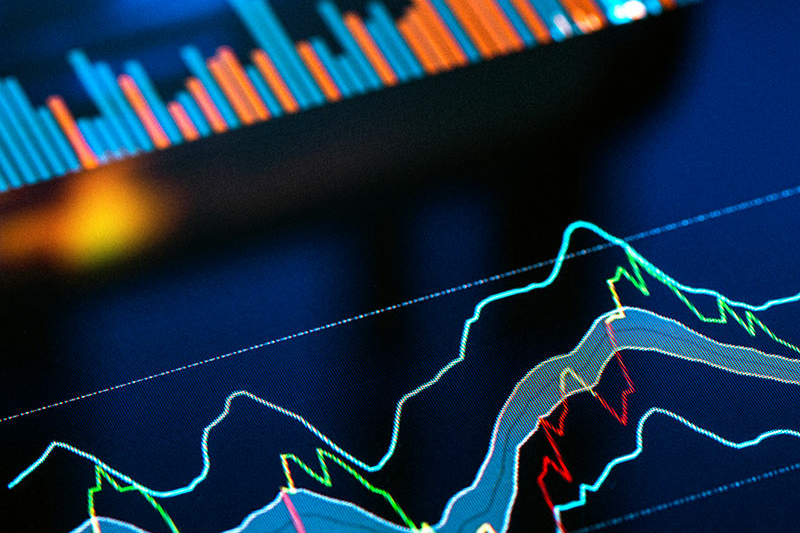US M&A settles back down
Deal value in the first half of 2022 could not match the record-breaking level of activity in 2021

US M&A deal levels remain robust, despite dropping from historic highs set in 2021
US M&A activity eased off in the first half of 2022 following an annus mirabilis for US M&A in 2021. Total value slipped to US$995.3 billion, a 29 percent year-on-year fall, though this is consistent with dollar volumes seen before the pandemic and so remains healthy by historic standards. Deal volume also fell, by 21 percent to 3,818 transactions. While this also remains above average, there was a material softening in the frequency of deals moving through Q2, which saw a quarter-on-quarter drop of 22 percent to levels last seen in Q1 2020, when the market was just beginning to recover from the initial shock of the pandemic.
A lot has happened this year to test acquirers’ nerves. Inflation concerns had already begun to set in before the war in Ukraine started. The conflict catalyzed further unease in capital markets as well as exacerbated supply chain troubles which have, in part, contributed to inflationary pressures. The S&P 500 officially entered a bear market in mid-June, and the Federal Reserve has embarked on a monetary tightening program to bring prices under control, leading to an increase in financing costs.
Regulations are another consideration. The SEC has taken the SPAC market to task, proposing accountability for deal parties and intermediaries for inflated projections. This type of transaction ground to a standstill in Q2 this year, as participants digested their risk exposure and the implications of the regulator’s proposals weighing on overall M&A volume. More recently we have seen some truly innovative SPAC structures that have the potential to re-stimulate interest in these deals.
For the most part, the US M&A market has stood up impressively to everything that has been thrown at it, which alone is solid grounds for optimism. Despite technology stocks being sold off heavily in equity markets, the sector has once again outperformed on the M&A front as companies and PE sponsors, who remain heavily armed with dry powder in spite of the more challenging deal financing conditions, continue to be attracted to innovation.
The fall in price-to-earnings ratios in the public markets and EBITDA multiples in private markets mean that, all else being equal, acquisitions are more attractive today than they were a year ago. Naturally, investors remain cautious as they closely watch how inflation plays out, the Fed response and the impact of those actions on underlying economic growth. However, the second half of 2022 has the potential to reclaim some of the confidence lost in recent months.
Deal value in the first half of 2022 could not match the record-breaking level of activity in 2021

Despite facing economic and regulatory hurdles in H1, PE dealmaking remains resilient, and looks set to reach its second-highest value on record

After a series of rollercoaster years for the SPAC market, investors and sponsors are finding ways to improve deal integrity


Dealmaking in the US technology sector flourished in H1, despite a much-publicized fall in stock market valuations
Explore the data
The technology sector continued to be the driving force behind US dealmaking in H1 2022. A total of 1,299 deals valued at US$415.4 billion took place in the US tech sector in H1 2022, maintaining tech's status as the most active sector in terms of both value and volume.
Against a background of overall declining deal activity in the US this year, tech M&A maintained healthy deal activity—tech deal volume dropped slightly by 4 percent, while the aggregate deal value rose by 5 percent.
Thanks in large part to a few outsized deals, activity was especially robust at the top end of the market. Deals worth US$5 billion or more totaled US$282.8 billion in H1, a 58 percent increase year-on-year. In contrast, deals worth less than US$5 billion came to US$132.6 billion in aggregate, a 39 percent decrease from the same period the year before.
US $415.4 billion
The value of 1,299 deals targeting the US tech sector in H1 2022
5%
Percentage increase in deal value compared to H1 2021
The highest-valued deal in the technology sector so far this year was Microsoft's US$75.1 billion acquisition of US-based videogame developer Activision Blizzard, announced in January. If approved by regulators, the deal would not only be the largest transaction announced so far this year globally across all sectors, but the biggest technology deal on record in Mergermarket history (since 2006).
Although the Microsoft/Activision transaction is a record-breaker, it is only slightly larger than the second-biggest deal of the year so far, Broadcom's US$71.6 billion purchase of cloud computing firm VMware.
These two deals together accounted for 36 percent of total deal value within the sector—a sign of how outsized they are. Despite an economic downturn, the top end of the market could remain active due to large tech players having strong strategic rationale for continued dealmaking.
After years of buoyant stock market prices, the technology industry has seen public market valuations take a tumble this year. The S&P North American Technology Sector Index is trading at around 25 percent below the start of the year, causing valuations to decrease. These challenging conditions make it more difficult for dealmakers to both value companies and carry out deals.
As a result, there is also a hesitancy among companies to pull the trigger on deals. Well-planned merger agreements, using earn-outs and other types of deferred compensation, however, can be utilized to ease worries about deals, especially if there is a strong rationale for the transaction.
With the continued growth of online shopping and services, and adoption of digital transformation, activity in the technology sector will undoubtedly remain high relative to other sectors, despite the drop in public market valuations.
*Elon Musk is seeking to walk away from the Twitter deal, and Twitter has filed suit in the Delaware Court of Chancery to enforce the merger agreement.
White & Case means the international legal practice comprising White & Case LLP, a New York State registered limited liability partnership, White & Case LLP, a limited liability partnership incorporated under English law and all other affiliated partnerships, companies and entities.
This article is prepared for the general information of interested persons. It is not, and does not attempt to be, comprehensive in nature. Due to the general nature of its content, it should not be regarded as legal advice.
© 2022 White & Case LLP